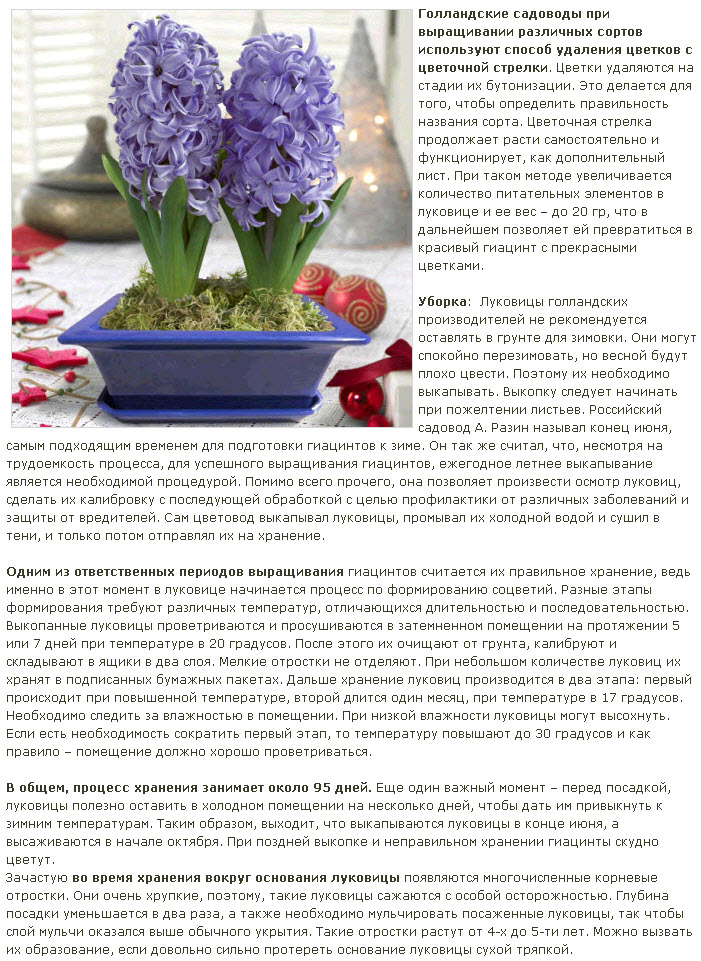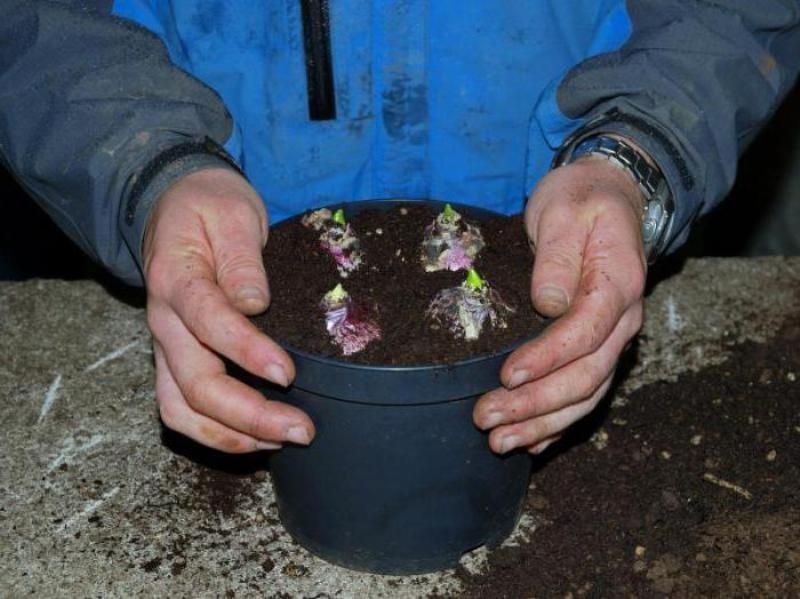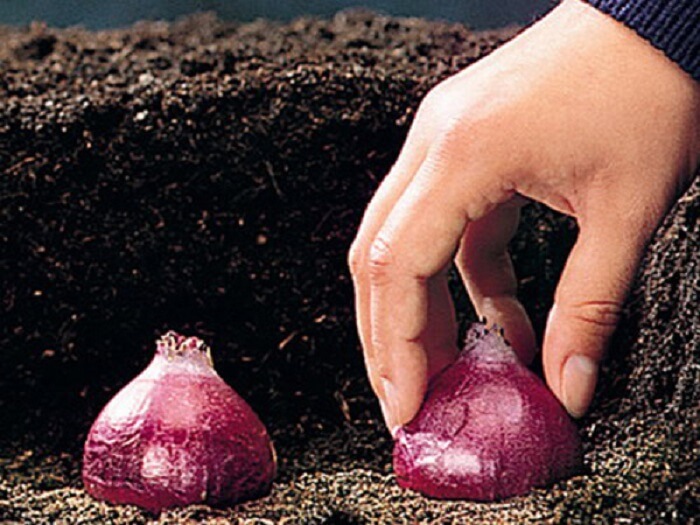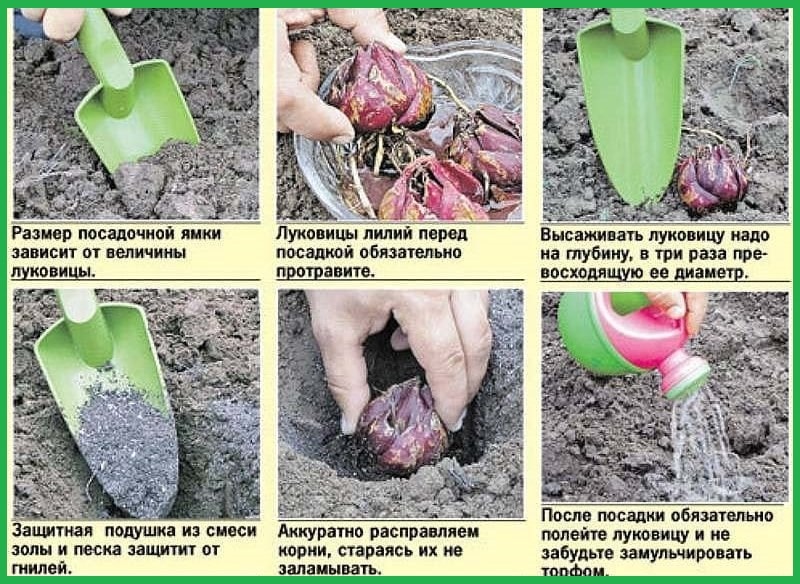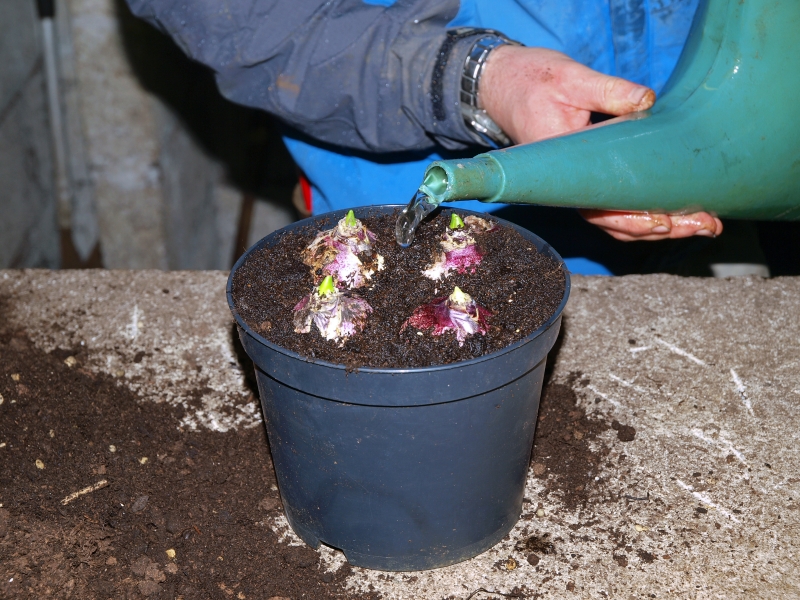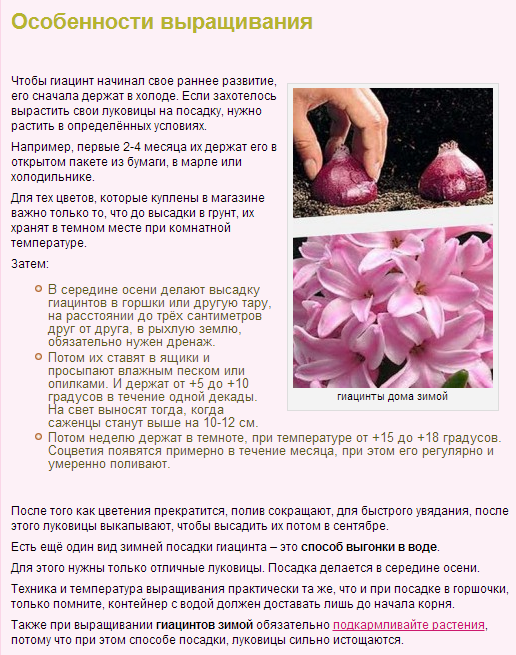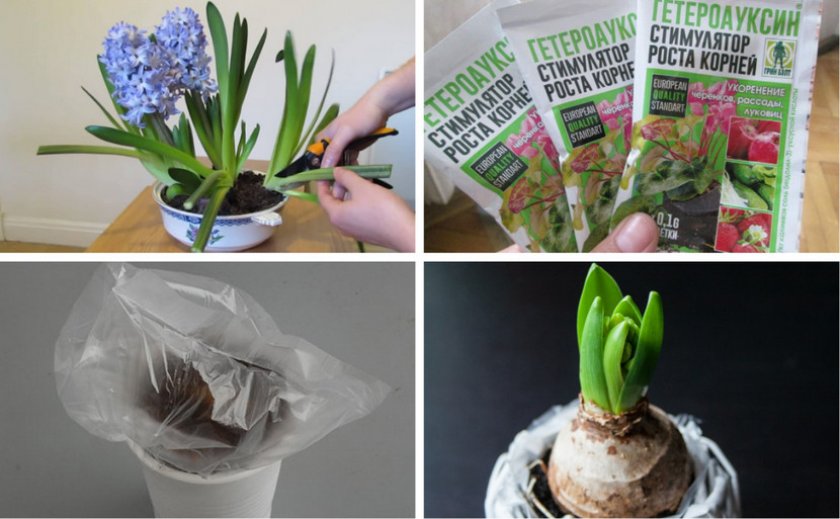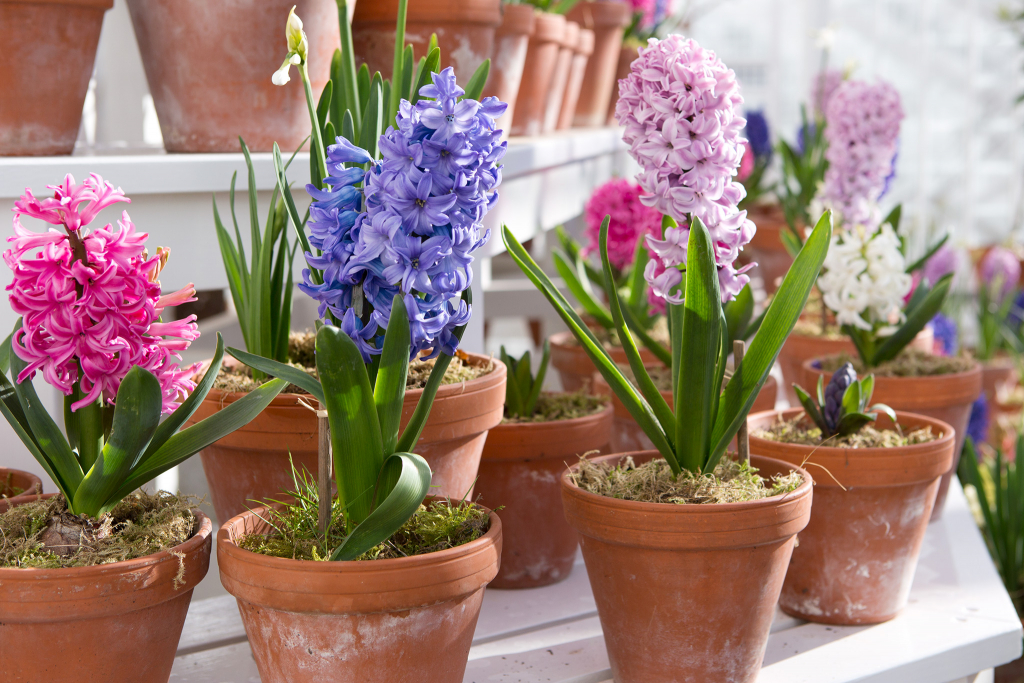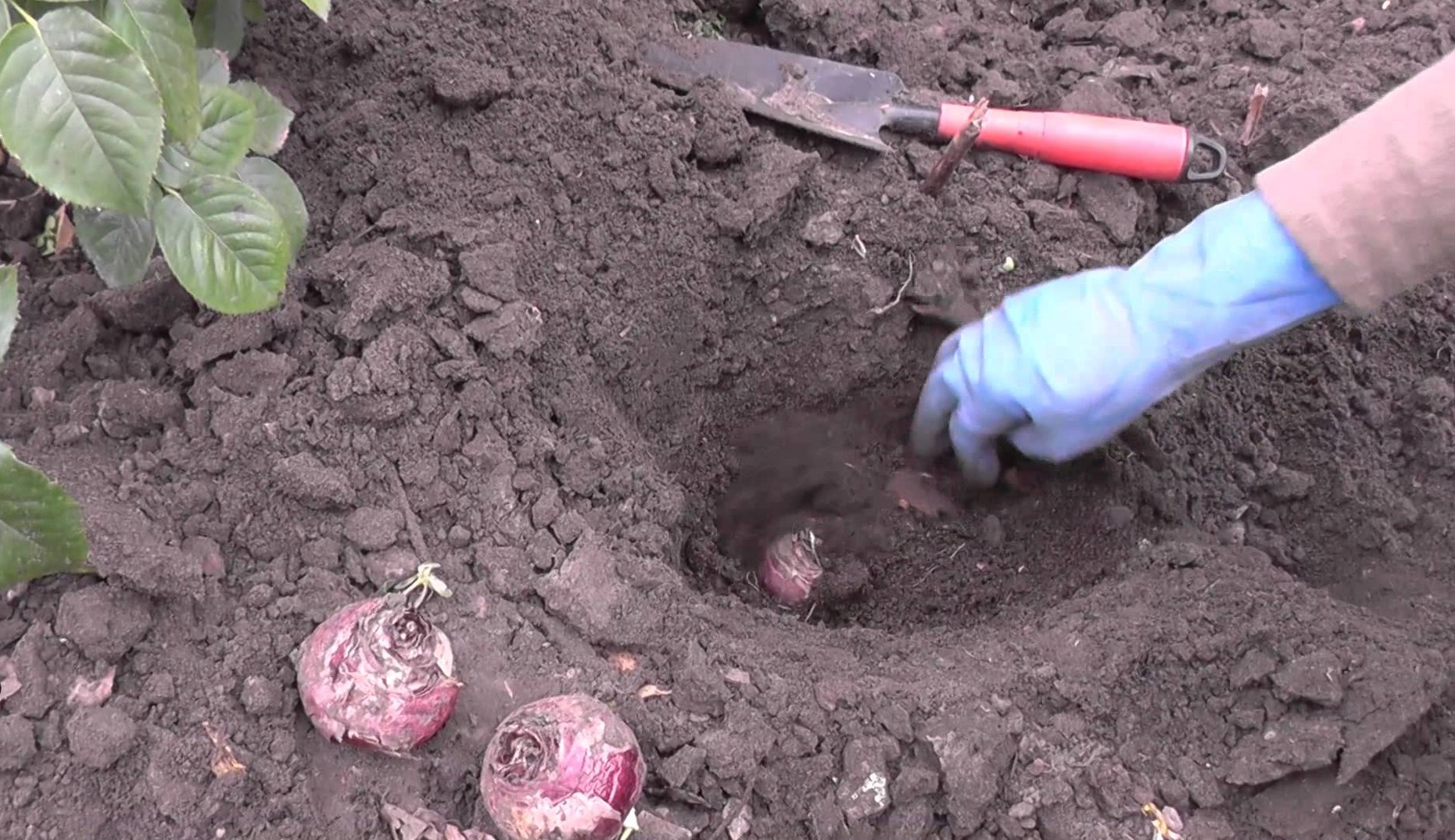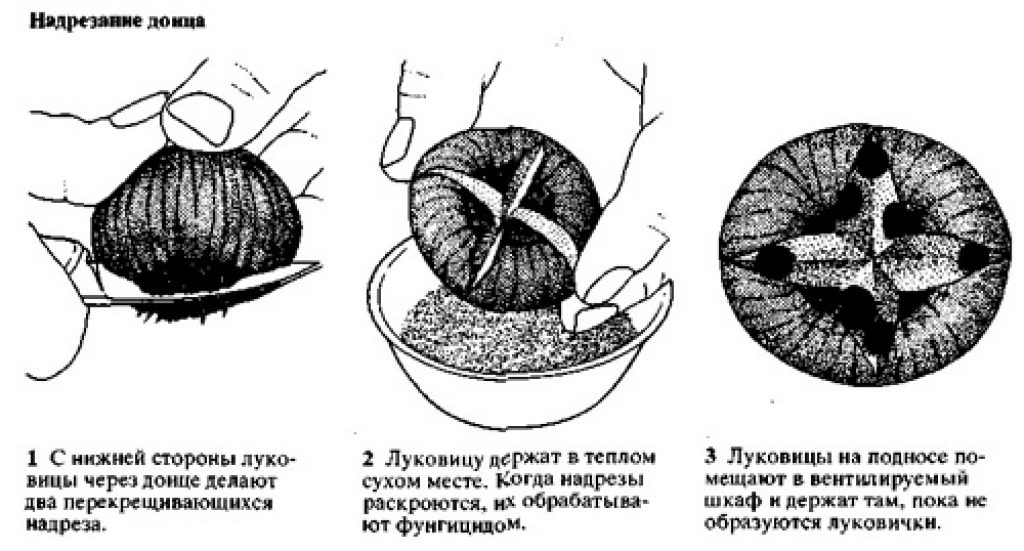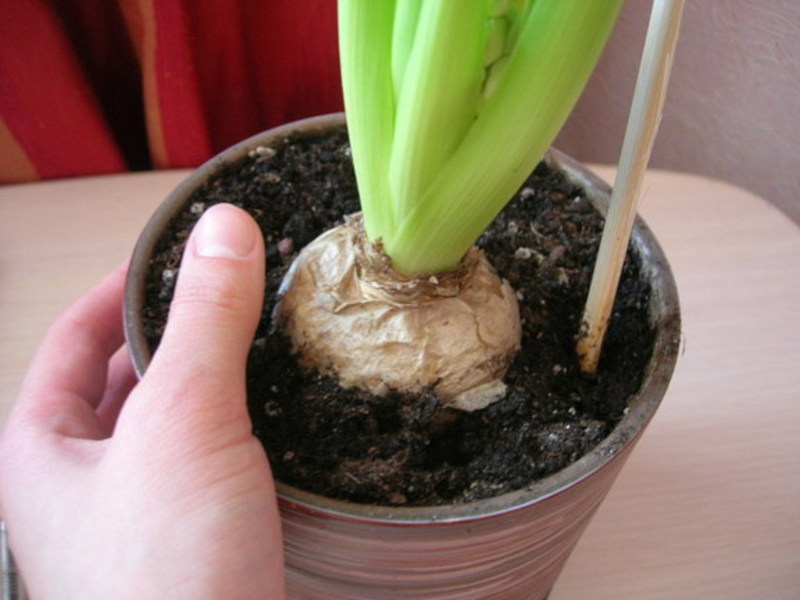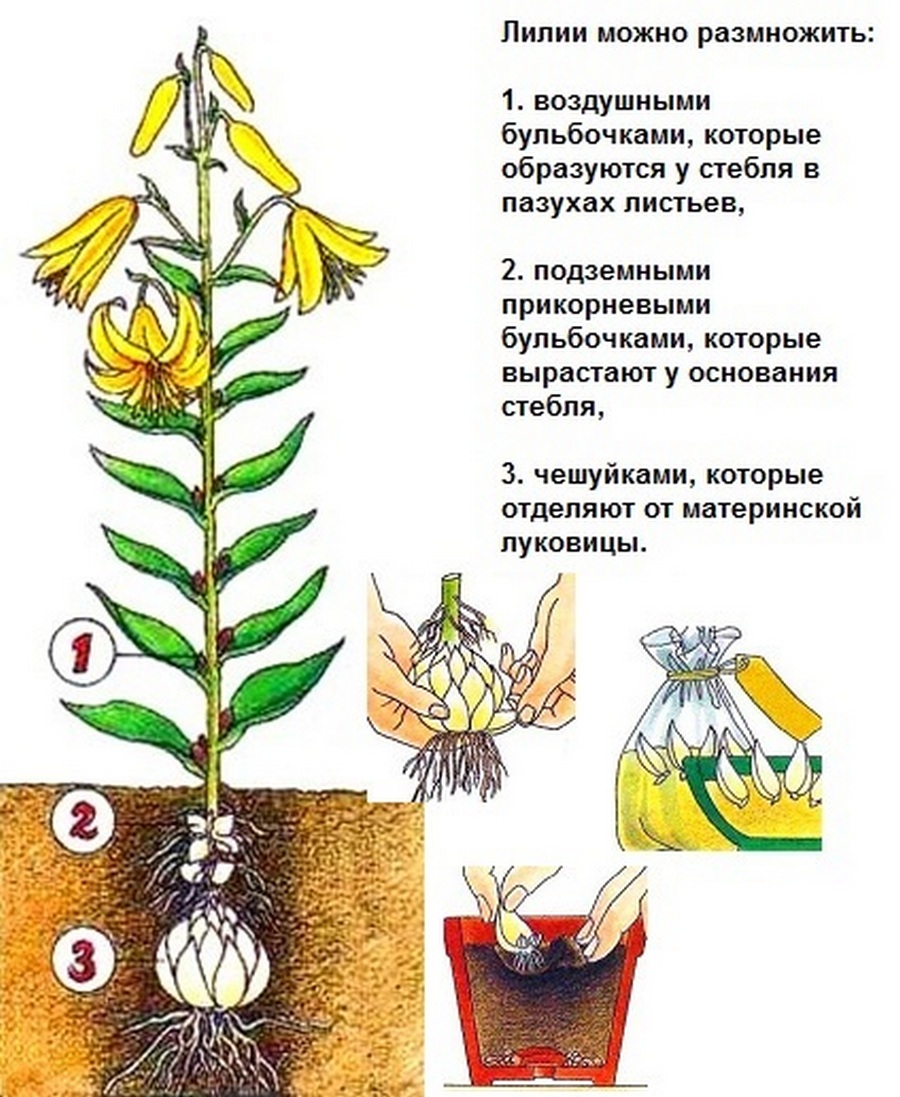Answers to readers' questions
Plant lifespan
The Hyacinth bulb can live for more than 10 years, but it is much wiser to renew the planting material every 3-4 years. Thus, there is no degeneration of the flower in the form of a decrease in the size of flowers and their density. Moreover, hyacinth bulbs are fertile for baby bulbs, one has only to set the goal of multiplying them.
Why doesn't hyacinth bloom?
There can be several reasons for the absence of flowers on a hyacinth:
- improper storage of bulbs during dormancy (high temperature);
- lack of moisture;
- lack of food.
A possible reason for the absence of a flower is the age of the bulb. Too young will not bloom, similar to old bulbs that have exhausted their resource and require replacing the planting material.
Why do the leaves turn yellow (dry)?
The first step is to make sure if this is not a natural process and if a period of rest comes. This usually occurs en masse after flowering ends in June. Then, according to the rules for caring for hyacinths, it is necessary to cut off the leaves, and then dig up the bulbs for storage for some time in a dark, cold place.
In another case, you need to check whether you have overflowed the plant and whether it is sick. Diseases in which leaves can change color and shape - various fungal and bacterial rot.
It happens that the plant has been attacked by pests (onion hoverfly, wireworm, onion mite), but it simply happens that the flower does not have enough moisture, because hyacinth does not tolerate drought.
Flower care in winter
When you have taken care of the dormant period of indoor hyacinth and let it rest in the fall in a dark, cool place for at least 2-3 months, in November you can carefully and gradually bring the plant out into the light and start preparing it for winter-spring forcing.
A container with a flower is brought in from a temperature close to zero by 12-14 degrees Celsius, lighting is gradually added up to 12 hours a day, and better - all 15 hours. Use backlighting when needed
After the plant grows, put on the windowsill constantly add temperatures up to 15-20 degrees, but do not exceed this temperature, so as not to damage the flower.
Of course, one should not forget about watering and feeding.
Types and varieties of homemade hyacinth

In nature, there are many varieties of luxurious bulbous plants, but only one is suitable for cultivation in an apartment and forcing bulbs. Oriental hyacinth is a species on the basis of which many hybrid varieties with buds of various colors have been bred.
Every year, breeders give flower lovers new varieties with fantastic shades of petals.

Popular tones:
- cream,
- snow white,
- Orange,
- deep yellow,
- lilac,
- dark purple,
- bright blue,
- blue,
- scarlet.
It's hard to forget what Hyacinth looks like. The photos show what delicate and bright colors are pleasing to the eye in winter cold weather and early spring.

Popular varieties:
- Innosanm.
- Amethyst.
- Ostara.
- City of Harlem.
- Orange Bowen.
- Yillow Hammer.
- Delft Blue.
- Lord Balfour.
- Pink Pearl.
- Gypsy Queen.
- Anna Marie.
- Carnegie.

- A perennial bulbous plant is tall and short, with one or several peduncles, and the shape of the buds is also different.
- The leaves are dark green, rather dense, directed upwards.
- From the center of the root rosette (leaf funnel), a peduncle of different lengths (depending on the variety) is pulled out, on which small flowers (up to 35 pieces or more) are tightly "planted".
- Further, the buds open, similar to a bell, but the petals are more bent from the center.
- A riot of colors pleases the eye for about a month.
- Regardless of the variety, Hyacinth has a delicious scent.
Varieties with different shades are revealed at different times: first - blue, then - pink, white, lilac, red. The varieties with yellow and orange petals bloom later than all.

Description of the plant
 Hyacinth is a flower belonging to the asparagus family. Herbaceous bulbous culture, growing in height from 20 to 40 cm. Leafy plates of a linear type, fleshy, collected in a root rosette of 4-8 pieces. Small buds form a brush, which is located on a powerful peduncle. The buds are shaped like bells.
Hyacinth is a flower belonging to the asparagus family. Herbaceous bulbous culture, growing in height from 20 to 40 cm. Leafy plates of a linear type, fleshy, collected in a root rosette of 4-8 pieces. Small buds form a brush, which is located on a powerful peduncle. The buds are shaped like bells.
The planting material is the bulbs, usually they are conical or rounded, with a diameter of about 6 cm.It is easy to find out from the scales on the bulb what color the flowers will be:
- Brown - orange, peach, beige, scarlet or yellow.
- Purple - blue, light blue or purple.
- Lilac - light gray, pink or crimson.
The flowering time is always the same, no matter where the hyacinth grows: in a pot or in an open field. If you provide optimal conditions during the opening of the buds, you can extend the flowering up to 25 days.
Home breeding methods
Every bulbous plant is propagated by children, they are separated from the mother, planted in a flower bed or in pots, and grown according to basic needs. It is clear what to do with the hyacinth babies. The question is how to get them.

There are several ways to breed hyacinth at home. New flowers can be grown from seeds, leaf cuttings, or you can get many children at once by doing certain manipulations with the tuber. The latter method is distinguished by the possibility of obtaining a large number of children at once, which is suitable not only for home breeding, but even for industrial breeding.
Tuber bottom manipulation
The propagation of hyacinths by bulbs was suggested by pests. Attentive gardeners noticed that a large number of children are formed immediately on the bulb damaged by rodents.
To achieve the appearance of children at home, they take the bulb at rest, wash it, free it from the remnants of leaves, dried scales, then carefully scrape out the bottom, make a funnel-shaped hole, removing the central bud

Another method differs in that a cruciform incision is made on the bottom before the thickening begins (about a third of the length of the tuber). If the bulb is large, then there may be several cuts in order to divide the bottom area into 6 parts, and not 4.
Places of damage must be sprinkled abundantly (or even smeared) with fungicide or activated carbon in order to avoid infection with diseases. After these manipulations, the bulbs are placed in pots upside down, covered with glass or a bag to create a greenhouse effect.
You can put vermiculite or sphagnum moss on the bottom of the dish, which retains moisture well. Some growers place the tubers upside down in vermiculite or sand. Humidity (85–90%) will help germinate the babies. They will appear in 1.5–5 months.

A special temperature regime will help speed up the process: for the first couple of weeks, the temperature should be high - about +30 ° C (a heating pad or a baby bottle warmer will help), and then for another 2-3 weeks it is lowered to + 17 ... + 20 ° C.
You can grow babies on scales. To do this, the onion is cut into 4 parts, the living scales are removed from the edge of the bottom, placed in vermiculite or sand and the same conditions (heat and moisture). Only all the scales are separately packed in plastic bags, occasionally opening to check, moisten and treat with a fungicide.
The bulbs (or scales) with the babies that appear until spring are placed in pots with loose soil, harvested where the temperature does not rise above +5 ° C. In the spring, they are planted in open ground, and for a dormant period they are again removed to the basement to avoid freezing. This needs to be done for several years in a row, then the children will grow up, get stronger, and they can be separated from the mother's tuber.A new plant will bloom in 4–5 years.

Sheet
As soon as the plant forms a peduncle, you can take a couple of leaves from it, cutting them off carefully at the very base. The leaves are treated with a substance to accelerate root formation, buried 3-4 cm into wet perlite or sand at the bottom of the bag, placed in a bright place
For 1.5–2 months it is necessary to maintain a humidity of 90% and a temperature of + 10… + 17 ° C. During this time, 5-10 children should appear at the base of each leaf.
At first they will look like small lumps, then they will develop into babies with roots and even new leaves. In the spring they are planted in the garden. For the winter, it is better to remove young plants from open ground, but if the winter is not very frosty, you can just properly mulch the plantings.

Seeds
Hyacinth grows from seeds before flowering in 5-7 years
When the capsules begin to turn yellow in the warm sunny summer, they are cut off, laid out until completely dry, then they open, the seeds are carefully collected, sorted into packages in accordance with the variety and color
The germination rate depends on when to plant hyacinth seeds. If you sow them in the fall, while the earth is still warmed by the sun, then shoots will appear in the spring. After the spring sowing, the seeds germinate only the next spring.
The easiest way to germinate seeds is by sowing them in a greenhouse on sand, where it is easier to regulate heat and humidity.
You can spur the formation of children in different ways or get ripe seeds of the hyacinth you like. The main thing is to be patient until the new plants reach the flowering age.
Forcing hyacinths
Forcing is the artificial sprouting of a bulb. Many people confuse forcing with planting this plant in open ground, and are generally confused when to plant hyacinth, in spring or autumn? Let's understand these concepts.

It is quite another matter if you plan to plant a hyacinth in your garden in a permanent place so that it grows there and delights you with its beauty. This is already called planting, it takes place in compliance with the natural requirements of the plant.
According to the rules, planting hyacinths is carried out in the fall, it is the autumn cool period that the bulb takes root and lays a flower bud. After that, having successfully overwintered, in the spring it will decorate your garden with its flowers.
When forcing, this cool dormant period will have to be imitated, or specially prepared bulbs will have to be purchased.
If we buy bulbs from shops and garden centers, they must be marked for winter distillation, which indicates that the bulbs have gone through the cooling period and have been properly prepared.
The bulbs should be large (5 cm or more in diameter), healthy and strong, in a word, ready for the hardships of winter flowering. They should be free of mold and rot, and should not be soft. Before planting, we store them in a dark, dry place at a temperature of 16-17 degrees.

If you want to distill the plant from your own bulbs, from your garden, then you will need to prepare them yourself, going through several stages. It is necessary to dig them out in advance (from June 20 to July 5), dry thoroughly at a temperature of 25-30 degrees and store at 17-20 degrees in a dark room.
Forcing in pots with soil
2-2.5 months before the expected flowering date, the bulb must be planted in a pot. To do this, we use a not very large container, put a drainage layer on the bottom, fill in a suitable soil.
Before planting, remove the babies from the bulbs, if any, and bury them (bulbs) 2/3 into the ground so that only the top of the head remains sticking out. The soil should be moderately moist. The bulbs of this plant do not have a dense protective shell and therefore easily rot from excess moisture.
The next step will be a cooling period. For our plantings to take root, they need coolness, darkness and a temperature of only 4-9 degrees.For these purposes, a basement or cellar, a glazed loggia, a heated garage, a cold storage room, a refrigerator are suitable.
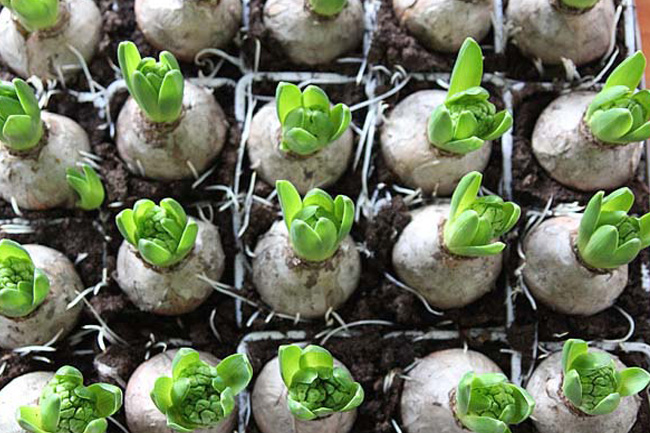
There the bulbs take root, give the first leaves and a peduncle. After that, they can be taken out and placed in a well-lit place. At first, hyacinths transferred from a dark place to a bright light will need to be shaded.
Very often, the surface of the earth in a container with hyacinths is mulched with moss or lichen. This not only gives an attractive decorative look, but also prevents the soil from drying out quickly.

Forcing hyacinths in water
Another interesting method is forcing the hyacinth bulbs in water. The technology is almost the same, but for germination, a glass container is used that is suitable in size, with a wide neck, to which the bulb is installed. Water is poured inside, its amount should not be less than 300 ml. The distance between the bottom of the bulb and the water should be about 2 cm to avoid decay.
The plant will take root by itself and reach the water. When the bulb is set, it must also be placed in a dark, low temperature place until the root system and flowering leaves are developed. A refrigerator will do. During the entire time of germination, water must be added to the vessel with the flower.
Once the leaves and flower arrow appear, the plant can be transferred to heat. The peduncle must be covered with an opaque material until it reaches 10 cm. Complex fertilizer can be added to the water.
In the warmth, hyacinths develop and bloom quickly.

But, with regard to this method, it should be noted that flowering when distilled in water will last less, and the bulb itself will be greatly depleted. Therefore, if you plan to grow hyacinth more than once, then the bulb will need to be planted in the garden in the fall.
A detailed video about forcing hyacinths in water:
Distillation in hydrogel
An innovative method of forcing a plant that uses a hydrogel instead of soil and water.
The hydrogel balls are poured with water with a complex fertilizer, according to the instructions, and placed in the filled container of the hyacinth bulb. The subsequent actions are the same as in the two previous methods: installation in a dark, cold place, and subsequent transfer to warmth to light.

Is it still possible to distill the hyacinth again?
Is it really impossible to reuse hyacinth bulbs for forcing and see them blooming on your windowsill next spring, and not plant them in open ground? Sometimes they say: "If you really want to, then you can." This will require special training.
Fertilizing watering is used to preserve nutrients in the bulb. Prepare the following mixture: 1 part potassium salt, 2 hours superphosphate, 1.5 parts ammonium nitrate. Dissolve 1-1.5 g of the mixture in 1 liter of water.
You can also use commercially available fertilizers, bird droppings, blood meal, and more. Moisten the potting soil with water before fertilizing. Fertilizing watering begins to be applied after the end of flowering and is completed by the time the leaves completely die off.
After the leaves wilted, the bulbs are left in the soil for some time to ripen, and then dug out.
But keep in mind that such preparation still does not guarantee 100% re-flowering at home.
How to care for hyacinths at home?

After flowering, the hyacinth begins a dormant period, during this period it is important to observe the optimal temperature indicators. Needs moderate watering
After the hyacinth has faded and its leaves have withered, you can start preparing the bulb. The peduncle and leaves are pruned, and the bulb is dug up. Most often, such manipulations are carried out at the beginning of summer.
The bulb is carefully examined for damage, if necessary, or for prevention it can be disinfected. And then, gradually reducing the temperature from 30 to 17 degrees, it must be maintained until disembarkation.
Keeping hyacinth at home
If you place a container with a flower away from heating appliances and open vents, the plant will delight you with its flowering for a long time. If the peduncle of the hyacinth is large, it may break off due to the severity of the inflorescences, so it will need to be supported.
Hyacinth is an unpretentious plant and with proper care it can be grown by growers with different skill levels.
With improper hyacinth care, the following problems may arise:
- The flower stops blooming. Most often this is due to inappropriate temperature conditions.
- The leaves of the plant turn yellow. This can happen due to improper watering or due to drafts.
- Withering leaves. With a lack of natural light.
- Falling buds. This is due to improper watering.
- Decay of flowers. This happens with too frequent or abundant watering.
Hyacinth: how to water at home?
Care must be taken to ensure that the soil around the bulb does not dry out. It must be watered regularly and carefully, while it is necessary to control so that water does not fall on the plant itself (leaves, flowers), this can cause their decay. Water must be poured onto the edge of the container or into a pallet. Be sure to pour out excess water so that the root system does not rot. Water should be settled or filtered, at room temperature.
Feed the flowering plant with liquid complex fertilizer for flowering plants once every two weeks, according to the instructions.
Planting dates for hyacinths for growing in the open field
In most regions of Russia, hyacinths can be planted in the ground from early September to mid-October.
- If the bulbs hit the ground earlier, or the fall turns out to be unusually warm, the plants start growing and die when frost sets in.
- If you are late with planting, the bulbs will not have time to root by the time the soil is frozen.
Nevertheless, it is possible to embed the bulbs in the soil in the first weeks of November. For this, the landing site must be covered with foliage or other suitable material in advance and covered with a film. The soil will keep warm, and the bulbs trapped in it will begin to grow as they should.
Outdoor hyacinth care
Some time after the autumn planting, when the first cold snap begins, if you have not previously mulched your future flower bed with hyacinths, you need to do this now, or even better, cover it with spruce branches or dry fallen leaves (you should not do a heavy shelter), you can use straw.
And in early spring, when the snow melts and you first come to the dacha, the entire shelter will need to be eliminated so as not to interfere with the sprouts from making their way towards the sun.
Blossoming of hyacinths, as a rule, occurs in April-May, and the duration is only 1-2 weeks.
Watering
Watering hyacinths should be taken seriously, stagnation of moisture is contraindicated for bulbs, but the earth should not dry out, so try to moderately and shallowly moisten the flower bed. Especially often (but not abundantly) it is necessary to water the plant during the period of its budding and the beginning of flowering, as well as within 2 weeks after.
Top dressing
Top dressing is a very important point of care in growing hyacinths. The standard scheme looks like this (* the consumption of any mineral fertilizer is about 40 grams per 10 liters of water, or better according to the instructions on the package):
- The first top dressing must be done immediately after the first shoots appear, at this moment the plant needs nitrogen to grow the leaf mass (for example, it can be urea, ammonium nitrate or some kind of green fertilizer).
- The second time is fed shortly before flowering, that is, during the budding period - to obtain lush flowers. At this point, the plant needs a complex nitrogen-potassium-phosphorus feeding (more potassium) and a little nitrogen (for example, you can use nitroammophoska, or potassium chloride / sulfate and superphosphate, and, as an option, wood ash is suitable).
- The last (third) top dressing is at the end of flowering. The plant needs more phosphorus and a little potassium (i.e. superphosphate and potassium chloride / sulfate or ash).
Thus, if you water and feed hyacinths in a timely manner, they will delight you with their beautiful, lush and fragrant flowering.
And after flowering, be sure to cut the peduncles so that the plant directs all its forces to provide the bulb. Now it remains to wait until the leaves of the flowers fade and turn yellow, so that they can be dug up for the summer before the next autumn planting.
Why hyacinths are grown in pots

Flowers are grown both in pots and outdoors
Hyacinth is a perennial bulbous flower that quickly responds to the creation of favorable conditions with lush flowering. After that, the bulb needs rest, which is otherwise called the "state of rest". During this period, plant organs begin to form in it, which will delight with its beauty for the next season. These are natural processes for all bulbous plants, and hyacinth is no exception.
But at home, you can change the natural rhythms of the plant and get beautiful flowers by the desired date. This process is compulsory and is called “forcing”. Two options are possible: in water and in soil.
There are three types of forcing, depending on the growing period:
- early (by the end of December);
- medium early (getting flowers in the middle of winter);
- late (flowering in early spring).
When selling blooming hyacinths, a label with the text is often attached to the pot: discard the bulb after flowering. In this way, sellers inform that they cannot receive a flower again in the pot. To do this, you must proceed in accordance with the note suggested above: transplant the bulb into the soil on the street.
Residents of cities are often deprived of such an opportunity and do not know how to properly grow hyacinths. The bulb can not be thrown away, but planted in the local area, dacha or in any flower bed you like. It is likely that by the end of autumn she will give 1–2 babies.
Storing hyacinth bulbs
Storage varies between purchased flowering plants and those grown on the plot. In the first case, after flowering, the peduncle is cut off. If the plant grew in a small container, then it is transplanted into a larger pot. After trimming the peduncle and transplanting, the hyacinth is placed in a cool, lighted place. It can be placed against the glass of the window. There he will have enough light and the temperature will be low.
Watering hyacinth in storage should be done in moderation. In May - June, the preserved bulb is transplanted into a flower garden.

Storage option
Plants growing in the garden are dug up after flowering is complete and replanted in the fall before winter. In summer, the bulbs are stored in a cool, dark place.
How to propagate with bulbs?
Planting hyacinths with bulbs is the most traditional method. In the middle lane in the ground in a garden or in a flower bed, they are planted in early October. The main thing here is to be in time before frost, but you should not rush, otherwise, shoots may appear, which will subsequently freeze. This time is necessary for rooting, then the hyacinth will well endure the winter and will delight with its seedlings in the spring.
However, flowers can be grown not only outdoors, but also at home. Usually flowering is timed to some event. In this case, the wintering period will have to be recreated artificially (placed on the bottom shelf of the refrigerator for 12-14 weeks). To make your work easier, you can purchase onions already prepared for forcing. Typically, this information is indicated on the label.
It is imperative to pay attention to this, otherwise the flowering time will shift.
The process of selecting the planting material is no less important. Bulbs are selected at least 5-6 cm in diameter. Their consistency should be dense, and the surface should be free from damage, stains and other questionable defects. You can prepare the bulbs yourself.In the middle of summer, when leaves begin to dry on dead plants, new bulbs can be dug up, cleaned, dried (preferably in the shade) and stored in a dark, cool place.
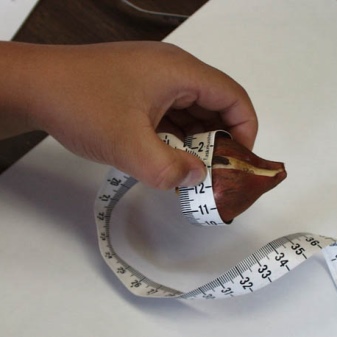

As a rule, a new one forms next to the old bulb, but there is another way to increase their number. Each of them has a bottom with root primordia, if you cut it around the circumference and place it in a cool, dry and well-ventilated place, then after a few weeks small bulbs will appear at the incision site. The process of raising children is long enough
In addition, it is important to separate them correctly so as not to damage the
Before planting, the soil must be dug up, if it is not loose enough - add peat or sand. Fertilizers (magnesium sulfate and potassium, nitrogen-containing) will be useful, depending on the condition of the soil. Bulbs can be planted with holes or pits to a depth of at least 10 cm with a step of 5-10 cm between them. From above, for the winter period, the flower bed can be insulated with straw or spruce branches. Watering is necessary as it dries, in the summer - every day.
For pots, you can buy ready-made soil or make it yourself. An indispensable condition is the presence of drainage holes. Any pebbles are laid out at the bottom of the container - for example, expanded clay or pebbles, and then the mixture is poured. At home, the planting depth may be less; it is enough to deepen the bulbs by about half. After the end of flowering, the flowering stem, and then the leaves, are removed. To recreate the conditions for rest, you should reduce watering and move the plant pot away from light and heat sources. For forcing, the bulbs can be grown in water (a narrow vessel with a wide neck so that they do not fall through).


Outdoor hyacinth care
How to care for hyacinths in the garden.
So how to care for hyacinth? Caring for hyacinths is not difficult, but the requirements for agricultural technology must be met strictly. Firstly, hyacinth is clean, so weed control in the area with hyacinths is a must. In addition, the plant needs constant loosening of the soil. If you want to make your work easier and at the same time protect the soil from drying out, and hyacinth from weeds and diseases, mulch the soil after planting. As for watering, it is necessary in dry season: the earthen lump should be soaked in depth by 15-20 cm.
Hyacinth care includes mandatory feeding. Feeding hyacinths is carried out 2-3 times during the growing season. Fertilizers are applied both in dry form and in the form of solutions, but slightly less fertilizers are placed in the solution than with dry top dressing, and the soil is watered before liquid top dressing. Dry fertilizers are scattered over the ground and then embedded in the soil with a hoe. The first time fertilizers are applied at the very beginning of growth (15-20 g of superphosphate and 20-25 g of nitrate per 1 m²), the second time is fed during the budding period (15-20 g of potassium sulfate and 30-35 g of superphosphate), the third feeding is done, when the flowering of hyacinths is complete (30-35 g of superphosphate and potassium sulfate each).
Hyacinth transplant.
Transplanting hyacinth flowers is simple: in the summer you dig up the hyacinth bulbs after flowering, store them until the fall, and in the fall you transplant them to another place. When to dig up hyacinths? Two months after the end of flowering, when the bulbs will regain strength after this year's growing season.
Diseases and pests of hyacinths.
Hyacinth flowers do not suffer from excessive soreness, but if there is a problem and they get sick, then here is a list of reasons:
- - purchase of already infected planting material;
- - too heavy acidic soil;
- - you used fresh organic matter as fertilizer;
- - unfavorable predecessors;
- - we looked through the spoiled onion during rejection;
- - neglected preventive disinfection of the bulbs before planting;
- - hyacinths were planted very densely.
Most often, hyacinths are affected by yellow bacterial rot (bacterial disease), which turns the bulbs into foul-smelling mucus. The first symptoms are stunted growth, spots and stripes on the peduncle and leaves. Affected plants should be dug up and burned, and the hole should be etched with bleach. Penicillous rot (fungal disease) is expressed in the fact that all aerial parts are covered with plaque (a product of the sporulation of the fungus) and rot, the flowers dry. They fight the fungus by spraying with copper-containing preparations.
Of the pests, flower flies, whose larvae eat the bottom of the bulb, cause trouble for hyacinths. Destroy them with drugs "Mukhoed", "Aktara", "Tabazol". The bear, feeding on the underground organs of plants, as well as the root onion mite, is also harmful, and the best way to combat them is mulching the soil.
Sometimes this happens with hyacinths: the inflorescence, not having time to appear from the outlet, falls out of it. The reason for this phenomenon is not a disease, but an excess of moisture in the soil, planting too early or storage at too low temperatures.
Reproduction of hyacinths
In addition to the vegetative reproduction method by children, which we have already described, hyacinths are propagated by the seed method. Hyacinth seeds are sown in boxes with soil consisting of two parts of humus, one part of leafy soil and one part of sand, and the crops are placed in a cold greenhouse, in which they grow hyacinths for two years before planting the bulbs in open ground. However, the seed method does not preserve the varietal characteristics of the parent plants in the offspring, therefore it is suitable only for the propagation of species hyacinths or for breeding new varieties.
Professional growers prefer to propagate hyacinths in such a way as cutting the bottom. A sterile teaspoon with a sharp edge is used as a tool, with which the bottom is cut out, removing the bases of the scaly leaves and leaving the rest of the bulb intact. To avoid the development of infection, the surface of the sections is treated with a fungicide, after which the bulbs are placed with the cut upwards on a tray with sterile sand and kept at a temperature of at least 21 ºC pending callus formation. After 65-90 days, from 20 to 40 babies are formed on the cuts of each bulb. These nests are planted in pots so that the children are slightly covered with soil. After two weeks of hardening procedures, the pots are transferred to cold greenhouses. In spring, young bulbs will begin to form leaves, gradually destroying the mother bulb. At the end of the season, young plants are separated and planted for rearing. They will bloom in the third or fourth year.
Possible problems with growing hyacinth
Hyacinth is susceptible to diseases, pest attacks and various ailments due to the influence of negative factors. The table shows the types of deterioration in the condition of the plant and their causes.
The main harm of hyacinth and how to deal with them
Table 2. Types of plant deterioration and their causes
| Ailment | Cause |
|---|---|
| Decay of the inflorescence area | Abundant watering. It is necessary to reduce soil moisture. |
| Damage on leaves and inflorescences. The plant gradually withers | Aphids or flower flies. You can save a flower with the help of insecticides. Washing the leaves, stem and inflorescences with soapy water will also help. |
| A cobweb appears on the plant, while the leaves dry and turn yellow | Spider mite. The damaged areas must be removed. The plant is treated with special solutions that are sold in shops with goods for gardeners. |
| Lack of flowering | Unsuitable temperature conditions. The solution to the problem is to adjust it to 22 degrees. |
| The inclination of the buds and the unattractive appearance of the peduncle | Illiterate watering. It is advisable to pour water only on the soil, since weak flowers fall off and bend down due to the pressure. |
| Leaves curl, bend down | Lack of light. The problem will be solved by changing the location of the flower. |
| Yellowness and dryness of leaves | Lack of moisture or draft.The plant needs more water and less temperature fluctuations. |
| The plant leans in a certain direction | The reason lies either in the location of the bulb in the pot, or in the flow of air. Often the stems of hyacinths fall off when the pots are placed near an open window. |
 Affected hyacinth leaves
Affected hyacinth leaves
Growing hyacinth is a simple process
Growing hyacinth at home does not require expensive equipment and time consuming. You just need to be attentive to the flower and follow simple rules. Subject to all conditions, the plant pleases with beautiful flowering for several years.
 The neighborhood of hyacinths of different varieties in one pot is a good decoration of the home interior
The neighborhood of hyacinths of different varieties in one pot is a good decoration of the home interior
Landing
Plant hyacinth in mixed soil. It can consist of peat, sand, garden soil, etc.
The presence of useful minerals in it is an important condition. Suitable fertilizers are sold in specialized stores.
Both liquid and dry dressings are suitable. You can read more about preparing land for seedlings in our article.
The maximum number of adjacent bulbs is 3. It is recommended to place them in the pot so that each of them is at a short distance from each other and the edges of the planting container.
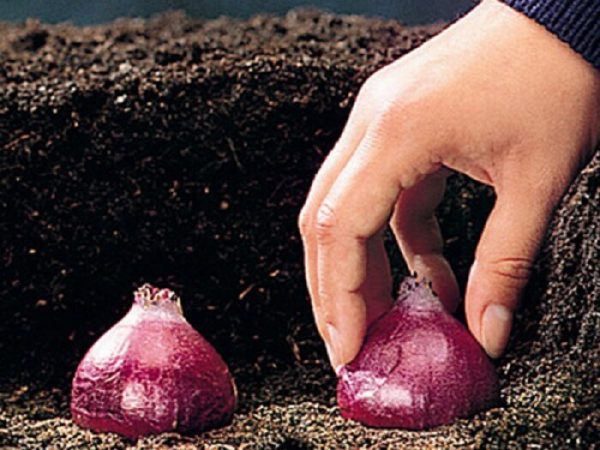 Correct fit example
Correct fit example
After the bulb is in the ground, it is advisable to press down on the soil and sprinkle with sand. The pot should be wrapped with plastic wrap, making several holes in it for the supply of oxygen to the plant. This manipulation will help protect the hyacinth from various negative factors.
Hyacinths can be transplanted. The procedure can be viewed in detail using the video.
Video - Hyacinth transplant
Before sprouting, hyacinth can be grown in water. The liquid level should not be higher than half the onion. After the emergence of a sprout, you need to place the planting material in well-fertilized soil so that the plant stocks up on the necessary nutrients before flowering.
 A good example of planting hyacinths. The bulbs are spaced apart from each other and from the sides of the pot
A good example of planting hyacinths. The bulbs are spaced apart from each other and from the sides of the pot
Basic principles of care
Growing hyacinth at home is possible subject to a number of rules. Caring for a flower means creating the most favorable growth environment. The table shows the basic requirements of the plant.
Table 1. Basic requirements of hyacinth
| Requirement | Recommendations |
|---|---|
| Light | About 16 hours a day, daylight should fall on the hyacinth. If it is not possible to arrange it like that, it is worth using special lamps. |
| Temperature | The temperature of the content depends on the stage of growth. For a bulb in a pot, +10 degrees is enough, for a sprout - +15, and for a blooming hyacinth - +22. Frost and heat are contraindicated for the plant. |
| Air humidity | Air humidity should be moderate. Dryness will negatively affect hyacinth, causing the leaves to turn yellow. Excessive moisture causes the decay process. |
| Watering | Warm water without chlorine required. It is the soil that needs to be watered with a smooth movement. It is highly discouraged to spray water on the stem and inflorescence. The soil should not be eroded and the bulb exposed. |
| Treatment | Cut off the leaves, inflorescences and stems if they have been affected by diseases or parasites. Also, this procedure is required after flowering before the "rest" of the bulb. |
 Hyacinth sprouts that are several days old
Hyacinth sprouts that are several days old


